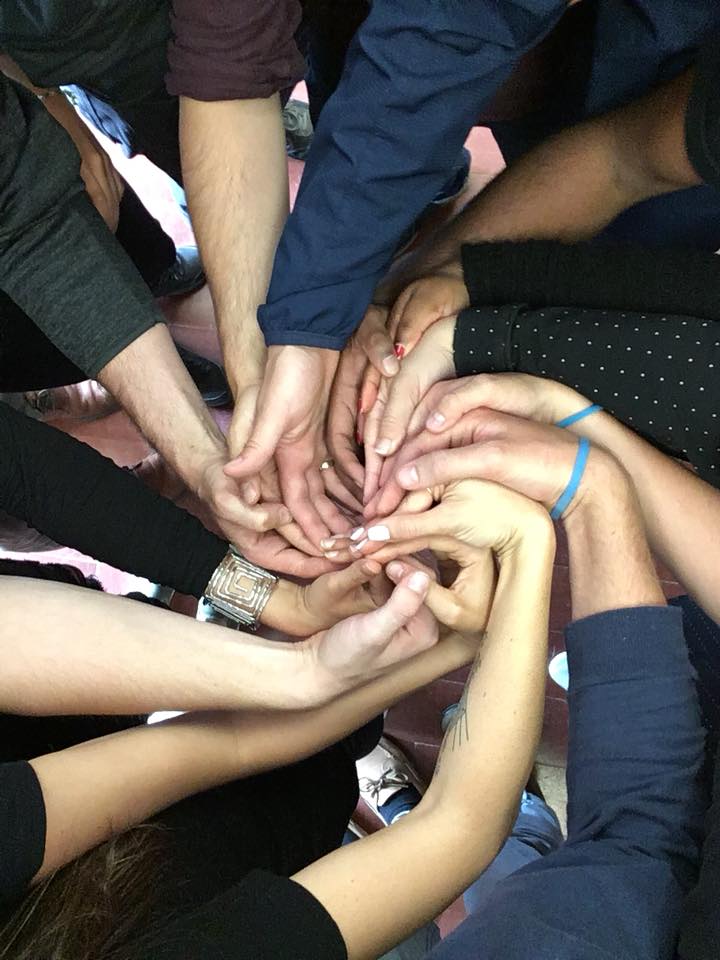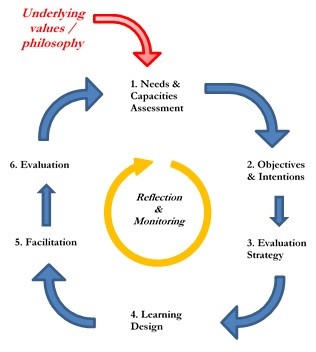Frameworks and Models that Support our Work

Frameworks that Support our Programs
There are many moving parts within a Coady youth leadership educational program. Over the years, content and methodology has been borrowed from a broad spectrum of sources and combined in various ways to produce the offerings currently available. In addition to the education program development cycle (which is central to all programming planning), others include, but are not limited to, the following:
Power Cube
Power is a central topic to any discussion of social change and leadership. A very useful tool to support this is the Power Cube, “a resource for understanding power relations in efforts to bring about social change.” It was developed by former Coady Director Dr John Gaventa and his Participation, Power and Social Change team at the Institute of Development Studies, University of Sussex. Elements of the Power Cube can be used separately, or the entire model can be introduced and unpacked.
Leadership WorkStyles
A central component of participants’ leadership development is gaining a deeper self understanding. A resource that has proven indispensable is the suite of assessment tools offered by Human Synergistics, primarily ACUMEN Leadership WorkStyles. This tool is used to help participants “strengthen thinking and behavioral styles that promote their effectiveness and moderate styles that prevent them from realizing their potential.”
The Circle of Awesomeness
The HeartWood Centre, based in Halifax NS, developed a Framework for Community Youth Development, to support community groups to meaningfully engage young people’s participation in all walks of life. This framework was renamed “The Circle of Awesomeness” by some of the youth involved in its validation process, due to its ability to accurately home in on the various supportive elements required for young people’s participation.
Motivational Interviewing
Participants are introduced to the principles and practice of Motivational Interviewing, partly due to its potential as a community development tool, but primarily to learn some principles, techniques and skills of effective change-based communication.
Education Program Development Cycle
This cycle has been a vital framework for the design and development of all Coady youth leadership programs in recent years. It was created by many people over several years, but the version provided below has been adapted from Fletcher et al (2014). Another model that is often utilized in various ways is the ASPIRE model, created at the Tatamagouche Centre.
The various activities and processes of training adults can be separated into six phases. These phases are not rigid boxes, completely separate from each other, but are instead guides to the orderly planning and facilitating of adult learning programs. The six components are as follows:
- Needs and capacities assessment: the process of finding out what people already know, believe in and can do and then identifying what they want or need, making judgments about what is most important/critical in a particular situation, and then translating these findings into educational objectives.
- Determining objectives and intentions: the objectives/intentions will define or set out a direction of what knowledge, skills and attitudes are to be learned, how well they are to be learned, and the intentions behind the process of this learning.
- Evaluation strategy: evaluation is important to each phase of program design and implementation and can inform program design, so it is important to design an evaluation strategy early in the process.
- Learning design/planning: the process of transforming program objectives and intentions into a pattern of activities designed to accomplish a defined purpose.
- Facilitating/animating: the process of actually implementing the plan. This is the construction of the direct educational relationship.
- Evaluation: the process of determining and assessing the value, accomplishments/outcomes of a program. This leads to a reassessment of participants’ needs and capacities which begins the cycle again.
Before this process can begin however, it is beneficial to take some time to determine what values and philosophy should underpin the entire learning process. During the process, ongoing reflection and monitoring should occur throughout to ensure continued relevance, efficiency and effectiveness.
The complete cycle can be represented diagrammatically as follows:

